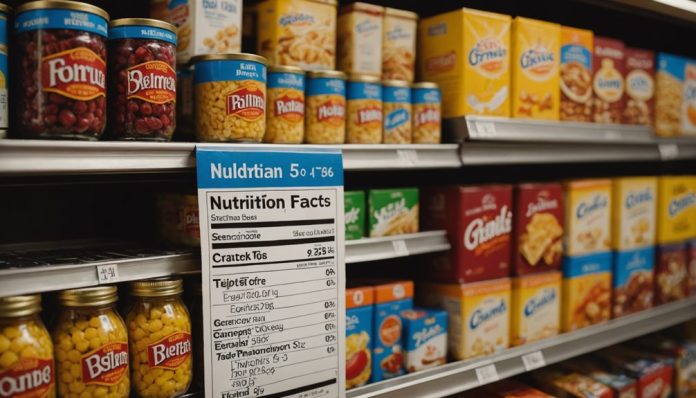Understanding food labels is essential for making informed dietary choices.
Start by decoding serving sizes to prevent overeating and ensure accurate comparisons between products.
Analyze calorie information to manage daily intake, focusing on calorie density.
Identify key nutrients by checking for vitamins, minerals, and fiber.
For more useful information visit YourHealthToday
Key Takeaways
How do I read food labels for better health choices? To enhance your dietary habits, start by analyzing serving sizes to control portions and avoid overeating, and check calorie counts for informed intake management. Look for essential nutrients like vitamins and minerals to ensure balanced nutrition, and be vigilant for hidden sugars to minimize consumption. Critically evaluate health claims on labels, ensuring they have scientific support for accuracy.
Analyzing Calorie Information
How does understanding calorie density and portion control help in making dietary choices?
Understanding calorie density helps you gauge how much energy food provides relative to its weight, which is crucial for making dietary choices.
Foods high in calorie density, like nuts and cheese, are energy-rich but can quickly increase daily calorie intake.
Portion control ensures you don’t consume more calories than intended, as labels usually reflect a specific serving size.
Identifying Key Nutrients
How can I identify key nutrients on food labels?
To identify key nutrients on food labels, focus on fundamental vitamins (A, C, D, E, K, and B-complex), dietary minerals (calcium, iron, potassium, magnesium), and fiber sources (whole grains, fruits, vegetables).
Check protein quality, especially for plant-based diets, by ensuring a mix of amino acids.
Opt for unsaturated fats and complex carbohydrates to support heart health and energy levels.
Understanding these elements helps you make informed dietary choices.
Spotting Hidden Sugars
To spot hidden sugars in your food, scrutinize ingredient labels for names like agave nectar, barley malt, rice syrup, sucrose, and high-fructose corn syrup.
These sweeteners, often used to lower sugar’s position on the list, still contribute to overall sugar intake.
Use the nutrition facts panel to check total and added sugars, and opt for products sweetened naturally with stevia or monk fruit.
Staying informed allows you to make healthier choices without feeling restricted.
Understanding Additives
Understanding food additives involves recognizing their purpose: emulsifiers blend ingredients, preservatives maintain freshness, and colorings enhance appearance.
Regulatory bodies like the FDA and EFSA ensure their safety through rigorous evaluation. While safety is prioritized, some individuals may limit certain additives like artificial sweeteners for personal health reasons.
If you are interested to learn more about your health check – 4 worst blood pressure drugs
Frequently Asked Questions
How Are Food Labels Regulated Across Different Countries?
Food labeling standards differ globally, with countries adhering to international guidelines like those from the Codex Alimentarius to protect consumers. However, disputes arise due to varying local regulations and interpretations. Recognizing these differences can help consumers make informed decisions based on their preferences and needs.
What Do the Different Food Label Certifications Mean?
Food label certifications such as organic, non-GMO, and fair trade indicate that products meet specific standards. Organic certification ensures that food is grown without synthetic pesticides or fertilizers, non-GMO means the food does not contain genetically modified organisms, and fair trade ensures ethical labor practices. These certifications empower consumers to make informed choices about the products they purchase.
How Often Are Food Labeling Laws Updated?
Food labeling laws are updated periodically, often in response to new scientific findings or public health concerns, but not on a fixed schedule. The updates can be influenced by new research, consumer demands, or changes in dietary guidelines. It’s important to stay informed about these changes to make informed decisions. Monitoring official announcements from regulatory bodies will keep you updated on any modifications.
Why Do Organic and Non-Gmo Labels Differ?
Organic and non-GMO labels differ because organic certification prohibits synthetic pesticides and fertilizers, while non-GMO labels specifically indicate that the product does not contain genetically modified organisms. Organic standards encompass a broader range of agricultural practices beyond genetic modification, including soil health and animal welfare. Understanding these distinctions helps consumers make informed choices based on their priorities.
Can Food Labels Indicate Potential Allergens?
Yes, food labels can indicate potential allergens. They often list common allergens such as peanuts, gluten, and others, complying with regulations like the Food Allergen Labeling and Consumer Protection Act (FALCPA) in the U.S. This transparency helps consumers avoid allergens and make informed dietary choices.










